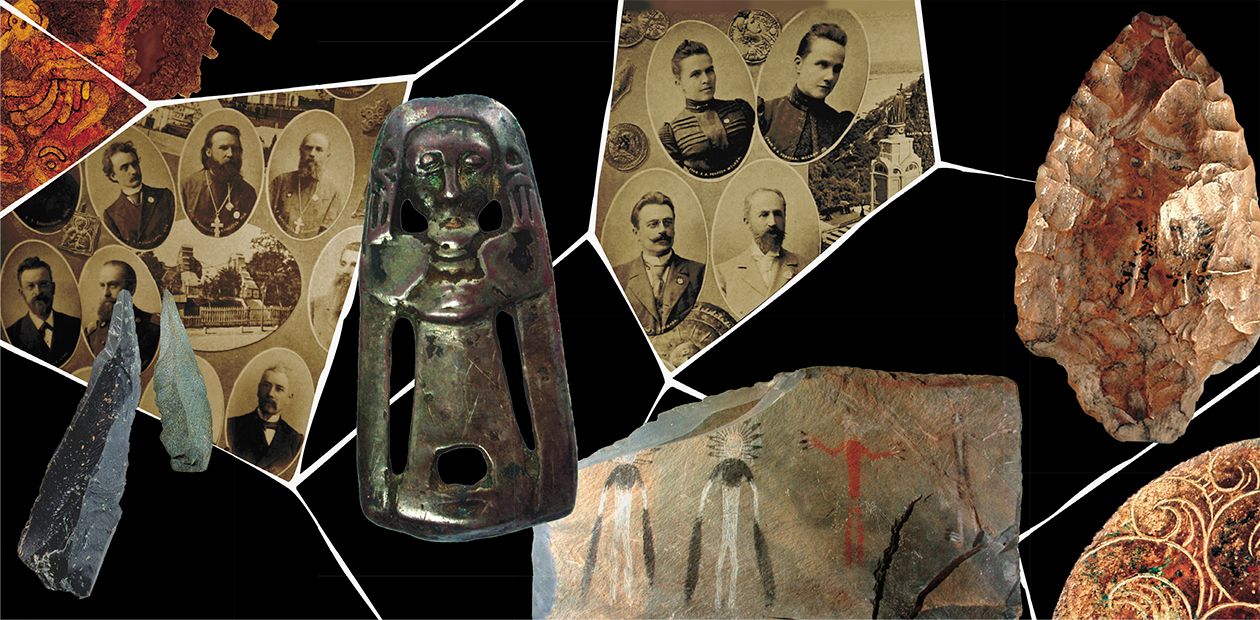The FIRST after World War I. The All-Russian Archaeological Congress (Novgorod, 1911 - Novosibirsk, 2006)
The revival of past traditions has become a marked feature of our life. In October, the All-Russian Archaeological Congress is resuming its activity after a break of nearly one hundred years. Prior to the break the Congress was hosted in various cities of the vast Russian Empire — from Novgorod and Chernigov to Tiflis and Riga. These meetings promoted archaeological research in provinces and were regarded as significant events in the cultural life of the country as they attracted the attention of the public at large. It is noteworthy that the first Archaeological Congress after the one-hundred-year break has taken place in Siberia, which is considered presently as one of the centers of the origin of Homo sapiens. The Congress was initiated and held by the Institute of Archaeology and Ethnography of the Siberian Branch of the Russian Academy of Sciences. The selection of articles dedicated to this long-awaited happening introduces the reader to a variety of unique and not widely known documents from scientific archives, testifying to the three hundred years’ development of Russian archaeology.
Revival of traditions...
Regular Russian Archaeological Congresses organized by Count A. S. Uvarov, founder of the Moscow Archaeological Association, became a highlight in the history of development of this “science about antiquities”. The Congresses were held in various Russian cities once every three years. Agendas and major topics for discussion focused on the history and archaeology of the region where the Congress took place.
The Congresses were organized by the Moscow Archaeological Association, particularly by the Preparatory Committee that worked during the periods between meetings. The Committee’s major task was to select topics for study and discussion in various areas of archaeology. In response to the stated tasks, scholars did their research, wrote reports and made presentations. The Preparatory Committee collaborated with learned societies and other associations, as well as with local scholars, students of local history and collectors.
The Committee also developed guidelines for the next Congress. Research teams of the Committee made a survey of local historical monuments, executed archaeological excavations and organized exhibitions and excursions. Exhibitions displayed artefacts from local museums and private collections. Many items from private collections were deposited in local museums after Congresses, for instance in the University museums in Kiev and Kazan, the Museum of Tiflis, the Hermitage in St. Petersburg and the Historical Museum in Moscow.
Archaeological Congresses were popular not only with scholars and scientists, but also with the public at large as they generated popular interest in the history of the country. Prominent public leaders, representatives of provincial governments and members of the royal family were among patrons of Archaeological Congresses.
The results of research were published in “Congress Proceedings” and “Reports of the Preparatory Committee”. Archaeological Congresses coped well with the difficult task: “…on the one hand, to draw the attention of the Government to the necessity of archaeological research in Russia, and on the other hand, to promote closer collaboration of experts in various disciplines; and through such joint research to arouse public interest in archaeology in all regions of Russia including the most remote provinces”.
In the period from 1869 to 1911, 15 Archaeological Congresses were held. Congress 16 was scheduled for late July 1914. “All the preparatory work had been done including a regular exhibition of local antiquities. The Executive Board, headed by Countess P. S. Uvarova, and the first participants of the Congress had arrived at the place where the Congress was to be held”.
This Congress had bad luck: it was cancelled because of the beginning of World War I and full mobilization; the exhibition was dismantled. In 1915, however, a catalogue of the cancelled exhibition was released; it is “the only monument to the efforts spent and to the hopes that would never come true”.
In the USSR, Annual Sessions of the History Department of the Academy of Sciences and Plenums of the Institute of Archaeology were held; they focused on the results of archaeological expeditions. These yearly meetings served as substitutes for the Congress. The tradition to hold a meeting of archaeologists from all over the country was revived only in the 21st century. Ninety-five years after the last Congress, Russian archaeologists gathered together in Akademgorodok in Novosibirsk to discuss the crucial topics of the science that is able to “forecast the past”.
The Editorial Board thanks Dr. I. V. Tunkina, Head of the St. Petersburg Division of the Archives of the Russian Academy of Sciences, for permitting publication of selected documents from the archive deposits.
Our special thanks go to Dr. N. P. Kopaneva for her generous assistance in preparing these publications. We are thankful to Dr. D. N. Starostin, curators O. V. Iodko, N. D. Avakian, I. M. Schedrova and N. A. Petrova for selecting and preparing the illustrations
A. G. Abaidulova, N. A. Petrova (Department of Publishing and Exhibitions, the St. Petersburg Division of the Archives of the Russian Academy of Sciences)






